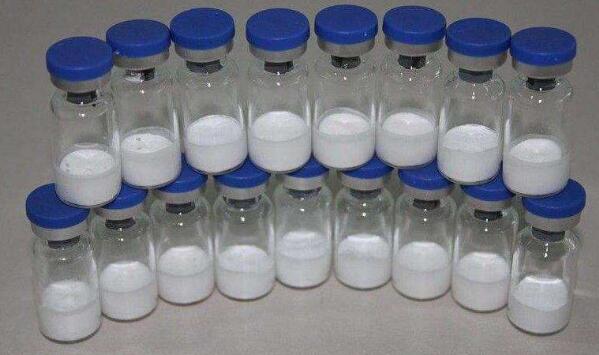Blog - Aure Chemical
Tert-butanol Freeze-Drying Technology: Principles, Advantages, and Applications
Of the four main organic solvents that can be frozen at room temperature—tert-butanol, glacial acetic acid, cyclohexane, and dimethyl sulfoxide—tert-butanol is considered the most suitable for freeze-drying formulations. This specialized technique, known as tert-butanol freeze-drying, offers unique advantages in fields like modern pharmaceuticals and biological products.

The Principles of Tert-Butanol Freeze-Drying
Freeze-drying, or lyophilization, is a process that removes water from a substance by first freezing it and then sublimating the ice to vapor under low-temperature, high-vacuum conditions. Tert-butanol freeze-drying builds upon this principle by leveraging the unique properties of tert-butanol as a solvent.
Key characteristics of tert-butanol that make it ideal for this process include:
High Freezing Point: Pure tert-butanol freezes at room temperature (25.5°C or 77.9°F) and forms a eutectic mixture with water that also freezes at low temperatures, ensuring complete solidification in standard freeze-dryers.
High Vapor Pressure: Its high vapor pressure facilitates sublimation, the direct transition from a solid to a gaseous state, which helps shorten the duration of the freeze-drying cycle.
Miscibility with Water: Tert-butanol can be mixed with water in any proportion. This is crucial for increasing the solubility of lipid-soluble drugs in water and can inhibit the degradation of unstable drugs in aqueous solutions, thereby enhancing their stability.
During the process, tert-butanol is mixed with the material to be dried. As the mixture is frozen, it forms a eutectic system with a lower freezing point. In the subsequent vacuum sublimation phase, the higher vapor pressure of tert-butanol allows it to convert directly into a gas more efficiently, removing both itself and water to dry the material . This technique is particularly effective for substances that are difficult to process using traditional freeze-drying methods.
The Advantages of Tert-Butanol Freeze-Drying
The use of tert-butanol as a co-solvent in freeze-drying offers several significant benefits:
Improved Product Form and Stability: For biological products like proteins and polypeptides, conventional freeze-drying can cause collapse or shrinkage. The addition of tert-butanol alters the material's microstructure, creating a more porous and uniform structure. When tert-butanol itself freezes, it forms needle-like crystals that can change the crystallization pattern of the solute, which is beneficial for sublimation. Adding a small amount of tert-butanol to water changes the water's crystalline state to also form needle-like crystals with a large surface area. As the ice sublimates, it leaves behind tubular channels that significantly reduce the resistance to water vapor flow, thereby increasing the rate of mass transfer. This results in improved product appearance, re-solubility, and stability.
Lower Drying Temperatures: Because the eutectic mixture of tert-butanol and water has a lower freezing point, the freeze-drying process can occur at colder temperatures. This is vital for heat-sensitive materials, such as bioactive substances and drugs, as it minimizes thermal damage and preserves their biological and pharmacological activity.
Increased Drying Efficiency: The high vapor pressure of tert-butanol allows for faster sublimation under vacuum conditions. This accelerates the removal of water, shortens the freeze-drying cycle, boosts production efficiency, and can lower manufacturing costs.
Enhanced Solubility: Products dried using tert-butanol have a unique porous structure that allows them to mix more rapidly with solvents upon reconstitution, significantly improving their solubility. This is particularly important for pharmaceutical preparations and biological products that require quick dissolution before use.
Low Toxicity: Most of the tert-butanol is removed through sublimation during the primary drying phase, resulting in very low residual amounts in the final product.
Applications of Tert-Butanol Freeze-Drying
Thanks to its distinct advantages, tert-butanol freeze-drying technology has a wide range of applications across several industries:
Pharmaceutical Industry: It is widely used in the production of sterile powders for injection and oral solid dosage forms. For instance, co-freeze-drying poorly soluble drugs with tert-butanol can improve their solubility and dissolution rate, thereby increasing their bioavailability. The technology is also instrumental in maintaining the activity and stability of biopharmaceuticals like monoclonal antibodies and recombinant proteins.
Biological Products: Vaccines, enzyme preparations, and blood products have stringent storage requirements. Tert-butanol freeze-drying enables their long-term, stable preservation without compromising biological activity, which facilitates easier transportation and storage.
Food Industry: This technique is used to dry heat-sensitive food components like natural pigments, flavor substances, and active polysaccharides. By operating at lower temperatures, it preserves the nutritional content, color, and flavor of these ingredients to the greatest extent possible.
While the benefits are numerous, producers must remain attentive to the purity of the tert-butanol used, as well as production safety and recycling concerns associated with it as an organic solvent. As the technology continues to evolve, tert-butanol freeze-drying is poised to play an even greater role in improving product quality and advancing industrial development across an expanding range of fields.


